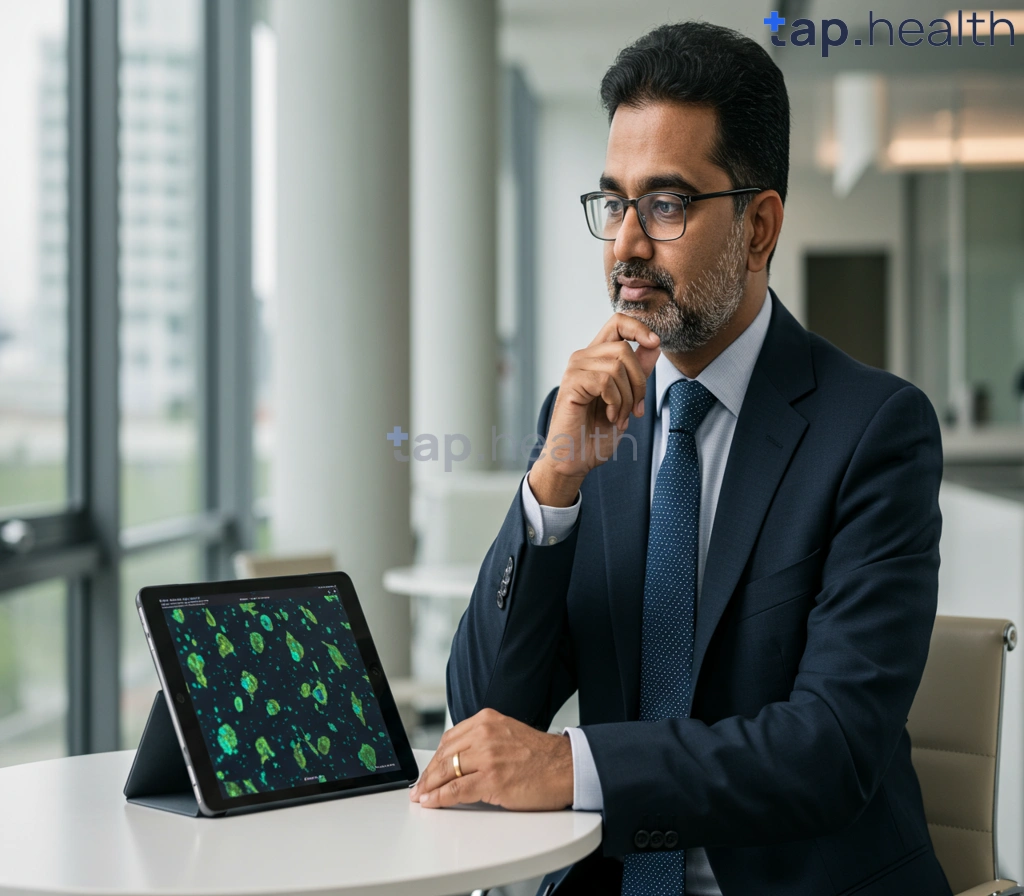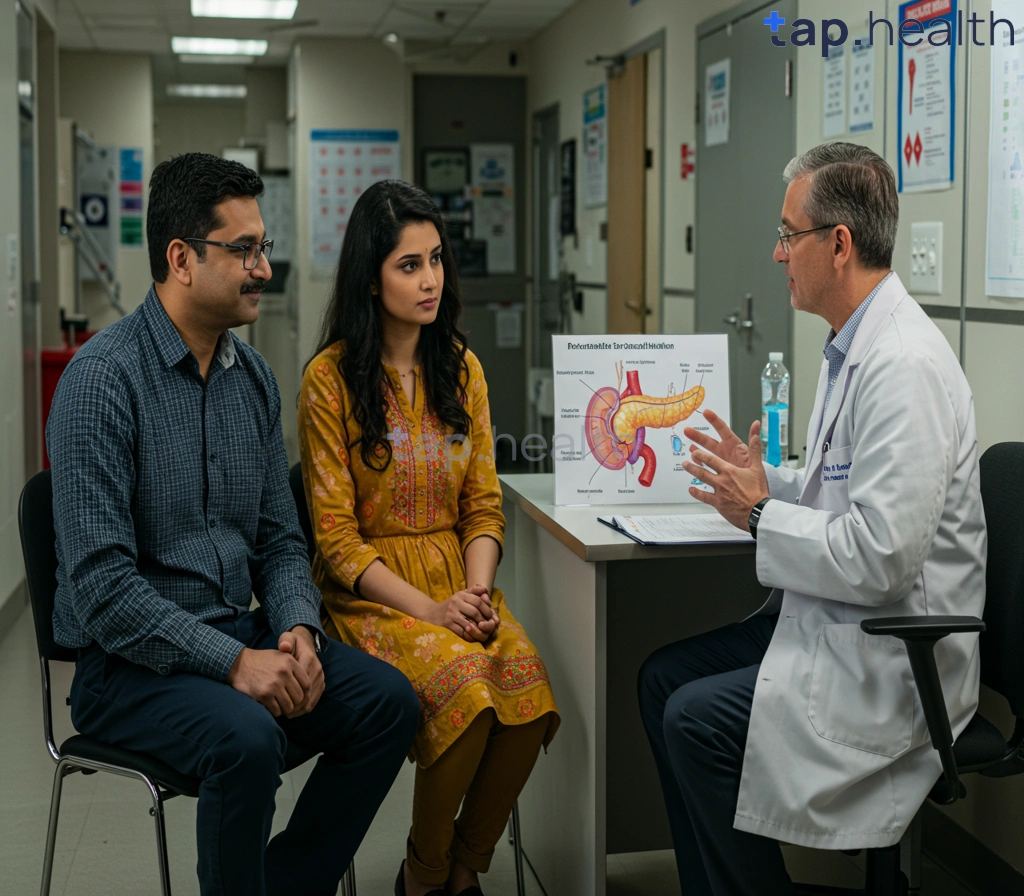Table of Contents
- New Type 2 Diabetes Guidelines: What’s Changed?
- Expert Analysis: Navigating the Updated Type 2 Diabetes Guidelines
- Decoding the New Type 2 Diabetes Guidelines: A Comprehensive Guide
- Type 2 Diabetes Management: Key Updates and Practical Tips
- Understanding the Revised Type 2 Diabetes Guidelines: FAQs
- Frequently Asked Questions
- References
Living with type 2 diabetes can feel overwhelming, especially with the constant updates in medical advice. That’s why we’re diving deep into the latest changes with Decoding the New Type 2 Diabetes Guidelines: Expert Insights. This post will break down the key updates in a clear, concise way, making it easier for you to understand and manage your condition. We’ll explore what’s changed, what it means for you, and provide actionable advice based on the expert recommendations. Get ready to feel empowered and more in control of your health!
New Type 2 Diabetes Guidelines: What’s Changed?
The global rise in Type 2 diabetes is alarming, impacting millions worldwide, including a significant portion of the Indian subcontinent and tropical regions. While precise figures for these regions are complex to obtain and vary greatly between nations, the global impact is undeniable. Consider the staggering statistic that approximately 2 million Americans have type 1 diabetes, including about 304,000 children and adolescents—a stark illustration of the disease’s pervasive nature. Type 2, far more common, presents similar challenges in these high-risk areas. Recent guideline updates reflect a crucial shift in approach.
Focusing on Prevention and Lifestyle Modifications
The new guidelines emphasize proactive management, shifting the focus from solely managing blood sugar levels to a holistic approach incorporating lifestyle changes. This is particularly pertinent in India and tropical countries where dietary habits and physical activity levels significantly influence diabetes risk. The emphasis is now on early detection through regular screenings, alongside comprehensive dietary education adapted to local culinary traditions. Understanding carbohydrate intake specific to regional diets is key. For practical tips on making positive lifestyle changes, check out our blog on 5 Easy Lifestyle Changes to Manage Type 2 Diabetes.
Personalized Treatment Plans
The one-size-fits-all approach is fading. Personalized treatment plans, considering individual genetic predispositions, cultural backgrounds, and access to resources, are gaining traction. This customized approach is especially crucial for diverse populations in developing nations, ensuring better adherence and outcomes. This necessitates culturally sensitive educational programs and easily accessible healthcare.
Increased Emphasis on Community-Based Initiatives
The success of diabetes management heavily relies on community support and accessible healthcare infrastructure. The new guidelines highlight the importance of community-based initiatives, educational programs, and support groups tailored to the specific needs and challenges faced by individuals in different regions. For India and tropical countries, this translates to accessible, affordable, and culturally appropriate interventions. Stronger community engagement is paramount for successful long-term management. For a comprehensive understanding of Type 2 Diabetes, including symptoms, causes, and treatment options, please refer to our detailed guide: Type 2 Diabetes: Symptoms, Causes and Treatment – Tap Health.
Expert Analysis: Navigating the Updated Type 2 Diabetes Guidelines
Understanding the Shift in Type 2 Diabetes Management
Type 2 diabetes, accounting for a staggering 90% of all diabetes cases in India and prevalent across many tropical countries, demands a nuanced approach to management. Recent guideline updates significantly impact treatment strategies, particularly emphasizing lifestyle modifications and early intervention. This is crucial given the high prevalence of diabetes within these regions, often linked to dietary habits and socioeconomic factors. The updated guidelines aim to improve outcomes and prevent long-term complications, which are often severe in these populations.
Key Changes and Implications for Indian & Tropical Populations
The revised guidelines place greater importance on personalized medicine, considering individual patient characteristics, including ethnicity and geographical location. This is essential in India and similar tropical climates, where genetic predispositions and environmental factors influence disease progression. For example, increased focus on weight management through diet and exercise becomes even more pertinent given the widespread accessibility of high-carbohydrate, processed foods in many regions. Early detection and aggressive management of risk factors like high blood pressure and dyslipidemia are key to minimizing complications. As we age, managing diabetes becomes increasingly complex, so it’s vital to understand the unique challenges; Managing Diabetes as You Age: Challenges and Solutions offers valuable insights.
Actionable Steps for Better Diabetes Management
These updated guidelines empower patients and healthcare providers alike. Prioritizing regular check-ups is vital. Adopting a balanced diet rich in fruits, vegetables, and whole grains, while minimizing processed foods and sugary drinks, is paramount. Regular physical activity, even moderate exercise, is crucial. Remember, comprehensive management of type 2 diabetes in India and tropical countries requires a collaborative approach between healthcare professionals and individuals. For some, weight management can present a different challenge; How to Gain weight with type 2 diabetes? provides guidance on this specific issue.
Conclusion: Taking Control of Your Health
The updated guidelines offer a roadmap towards better diabetes management tailored to the specific needs of individuals in India and similar tropical regions. By actively engaging with healthcare providers and implementing the suggested lifestyle modifications, individuals can significantly improve their health outcomes and quality of life. Don’t delay, take control of your health today!
Decoding the New Type 2 Diabetes Guidelines: A Comprehensive Guide
The global burden of type 2 diabetes is staggering. Data from the IDF Diabetes Atlas projects a rise from 536.6 million people (aged 20-79) living with diabetes in 2021 to a projected 783.7 million by 2045, a concerning increase in prevalence from 9.8% to 11.2%. This alarming trend is particularly relevant in Indian and tropical countries, where lifestyle factors and genetic predispositions often contribute significantly to the disease’s prevalence. Understanding the updated guidelines is crucial for effective management and prevention.
Key Updates & Regional Relevance
The new guidelines emphasize personalized approaches to managing type 2 diabetes, tailoring treatment plans to individual needs and risk profiles. This is particularly important in diverse regions like India and other tropical countries, where variations in diet, access to healthcare, and prevalent comorbidities must be considered. For example, the guidelines may place increased emphasis on lifestyle modifications like incorporating traditional, locally sourced foods rich in fiber and micronutrients, potentially mitigating reliance on expensive imported medications. Regular blood sugar monitoring becomes even more crucial for timely adjustments to treatment plans.
Actionable Steps for Better Management
Early detection is key. Regular health checkups, especially for those with a family history or risk factors, are essential. Adopting a healthy lifestyle including regular exercise, a balanced diet appropriate to the region, and stress management techniques are crucial. Working closely with healthcare providers to develop a personalized management plan that includes medication, if necessary, and regular monitoring is vital. Moreover, community-based initiatives promoting healthy lifestyles and access to affordable healthcare are crucial for tackling this widespread issue in Indian and tropical countries. While this guide focuses on Type 2 Diabetes, it’s important to understand the differences between Type 1 and Type 2. For a comparison, see our article: Which Diabetes Is Worse: Type 1 or Type 2? Key Comparisons.
Empowering Communities
Increased awareness through community programs focused on diabetes prevention and management within the specific context of Indian and tropical climates is urgently needed. This includes promoting culturally appropriate dietary advice and accessible exercise options. The updated guidelines provide a foundation for this crucial work. By understanding and implementing these changes, we can work towards a healthier future for populations at high risk of developing type 2 diabetes. For parents of children with Type 1 Diabetes, managing the condition presents unique challenges. Tips for Parents of Kids with Type 1 Diabetes: Complete Guide offers valuable insights and support.
Type 2 Diabetes Management: Key Updates and Practical Tips
The staggering statistic that up to 80% of Type 2 diabetes cases are preventable through lifestyle changes highlights the urgent need for effective management strategies, especially in Indian and tropical countries. These regions often face unique challenges related to diet, access to healthcare, and environmental factors contributing to the disease’s prevalence. Therefore, understanding the latest guidelines is crucial.
Prioritizing Lifestyle Modifications
Recent updates emphasize a holistic approach to managing Type 2 diabetes, placing strong emphasis on lifestyle changes. This includes a balanced diet rich in fruits, vegetables, and whole grains, mindful of regional dietary preferences. For example, incorporating traditional Indian spices known for their anti-inflammatory properties can support overall health. Regular physical activity, adapted to suit the climate and individual capabilities, is equally vital. Even short bursts of activity throughout the day can make a significant difference. For more detailed tips, check out our guide: 10 Proven Tips to Effectively Manage Diabetes | Simple Guide.
Effective Strategies for Indian & Tropical Climates
Managing diabetes in hotter climates necessitates mindful hydration and careful planning around physical activity during peak heat hours. Seeking advice from healthcare professionals familiar with the local context is essential for personalized guidance. This might involve adapting exercise routines, selecting appropriate dietary choices based on seasonal availability, and understanding the impact of heat on blood sugar levels.
Taking Control of Your Health
Empowering individuals to actively participate in their diabetes management is key. This means working closely with healthcare providers, adopting a proactive approach towards dietary and lifestyle changes, and consistently monitoring blood sugar levels. Remember, consistent effort in making lifestyle changes can significantly reduce your risk, improving your quality of life and overall well-being. By embracing these strategies, you can take control of your health and contribute to a healthier future. We also recommend reading: 10 Proven Tips for Effective Diabetes Management for additional support.
Understanding the Revised Type 2 Diabetes Guidelines: FAQs
What’s Changed in the New Guidelines?
The revised Type 2 diabetes guidelines likely focus on earlier detection and personalized management strategies. Given that 61% of people with diabetes in the global population are aged between 20-64 years, according to the IDF Diabetes Atlas, a significant emphasis is likely placed on preventative measures for younger adults in high-risk groups within Indian and tropical countries. These regions often face unique challenges related to lifestyle, access to healthcare, and specific dietary habits. Expect updated recommendations on lifestyle modifications, medication choices, and monitoring strategies tailored to these contexts.
How Do These Guidelines Affect People in India and Tropical Countries?
The updated guidelines should consider the high prevalence of diabetes within these populations. Factors such as increased urbanization, changing dietary habits (often leading to higher consumption of processed foods and refined carbohydrates), and limited access to consistent healthcare all play a role. The revised guidelines will hopefully incorporate culturally appropriate dietary recommendations, affordable medication options, and strategies to improve long-term management within the constraints of the regional healthcare systems. This may involve emphasizing community-based health programs and accessible self-management tools. Understanding the difference between Type 1 and Type 2 diabetes is crucial for effective management.
What Actions Can I Take?
The most crucial step is proactive health management. Schedule a consultation with your doctor to discuss your risk factors, especially if you fall within the 20-64 age group, which accounts for a significant portion of those living with diabetes. Early detection and consistent monitoring are key, along with adopting a healthy lifestyle that incorporates regular exercise and a balanced diet suitable for your region. Remember, proactive measures can greatly reduce the long-term complications associated with Type 2 diabetes, significantly improving your quality of life. Consider exploring local diabetes support groups for additional resources and peer support. It’s also helpful to understand which conditions are typically not associated with Type 2 diabetes; you can learn more by reading our blog on which condition is not usually associated with Type 2 diabetes.
Frequently Asked Questions on Type 2 Diabetes Guidelines
Q1. What is the key change in the updated Type 2 diabetes guidelines?
The new guidelines move beyond just blood sugar control to a more holistic, personalized approach. This includes lifestyle changes and early detection.
Q2. Why is this personalized approach particularly important in regions like India?
India and other tropical regions have high rates of Type 2 diabetes often linked to diet and socioeconomic factors. A personalized plan considers individual needs, cultural background, and available resources.
Q3. What lifestyle changes are emphasized in the new guidelines?
The guidelines stress balanced diets adapted to local cuisines and regular exercise as crucial preventative measures and parts of an overall management plan.
Q4. How can communities help in managing Type 2 diabetes?
Community-based programs, accessible healthcare, and culturally relevant education are vital for long-term success in managing the disease.
Q5. What are some potential challenges in implementing these new guidelines?
Challenges include ensuring access to personalized care, adapting treatment plans to diverse populations and resources, and promoting widespread adoption of lifestyle changes.
References
- A Practical Guide to Integrated Type 2 Diabetes Care: https://www.hse.ie/eng/services/list/2/primarycare/east-coast-diabetes-service/management-of-type-2-diabetes/diabetes-and-pregnancy/icgp-guide-to-integrated-type-2.pdf
- Your Guide to Diabetes: Type 1 and Type 2: https://www.niddk.nih.gov/-/media/Files/Diabetes/YourGuide2Diabetes_508.pdf





